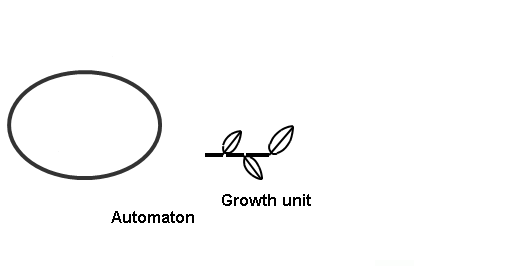GreenLab Course
Development
From Micro/Macro-states to the whole plant
The different levels of botanical plant structural elements (i.e. growth units, axis, architectural unit, and reiteration) can be generated using a dual scale automaton.
The first scale relies on micro-states building macro-states. Macro-state transitions define the second scale.
Macro-States
We can build axes from a list of successive macro-states, representing the succession of growth units.

Micro-states, Macro-states and growth units (Drawing X. Zhao, LIAMA, CASIA)
- This axis of three growth units repeats the same macro-state
((Mi1,3, 2) , (Mi1,2,1) ) three times.
This construction remains similar to micro-states, except that the physiological age may vary, in order to model mutation.
The automaton is thus a double scale automaton, building on the first scale macro-scale from micro-state sequences, and then the whole structure from macro-state sequences and branching.
Note that micro-state and macro-state transitions are sufficient for building all levels of the plant architecture hierarchy: growth units, axis, architectural units and reiterations.

Building the whole structure (Drawing X. Zhao, LIAMA, CASIA, and P. de Reffye, CIRAD)
-
Left: Three macro-states are involved in this construction structure.
Middle: This structure is obtained applying 5 cycles on the automaton. It characterizes the structure topology.
Right: A 3D graphical output is computed from the topology, adding geometrical traits to the metamers, such as length, diameters, angles and colour attributes.
Definition
